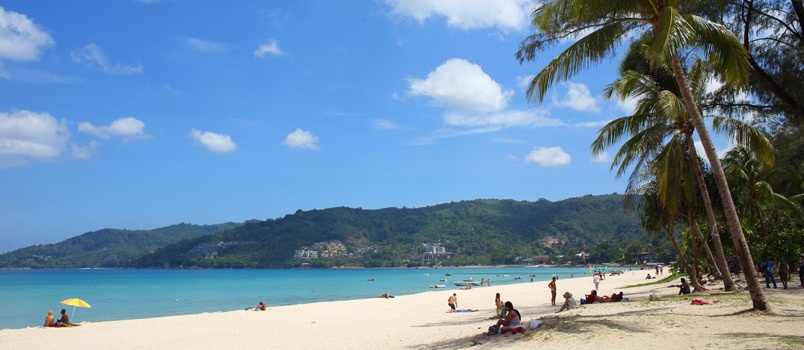


On Phuket Island (which is connected to the mainland by the Sarasin Bridge and the Thao Thepkasattri Bridge.), budget hotels, guest houses and roadside noodle stalls co-exist comfortably with luxury 5-star resorts, fine dining international restaurants and multi-million-dollar villas owned by some of the world’s top household names. About the same size as Singapore, Phuket is Thailand's second wealthiest province (after Bangkok).
While restrictions on hillside and beachside development have preserved much of the island’s natural beauty, Phuket’s infrastructure is well-developed — although around 80 percent of the land on the island remains forested, providing mountain vistas, sea views and jungle walks that are rare in a major tourist destination.
Phuket was not always about tourism. Well before the first backpackers discovered Phuket, its twin claims to fame were tin mining and rubber. As we get well stuck into the 21st century, the open cast tin mines have gone — some turned into marinas and others into luxury resorts — while the rubber plantations are slowly succumbing to housing and resort development. Nevertheless, about a quarter of Phuket’s land is still given over to rubber plantations.
Phuket is roughly 50 kilometers from north to south and 20 kilometers east to west at its widest point. Depending on traffic, you can drive the whole length of the island in about 1-2 hours. The west coast is home to long sandy swimming beaches and most of Phuket’s bigger resorts. The east coast faces out onto Phang Nga Bay and, with one or two exceptions, is not ideal for swimming. Most east coast resorts offer transfers to nearby islands (as little as 10 minutes by boat) for those who want a traditional day baking on the beach.
Although really deserted beaches are largely a thing of the past on most parts of the main island (there are still one or two exceptions), Phuket really does cater to every possible whim. Incredible beaches, jungle-covered hillsides, yacht marinas, superb tropical climate, vibrant (and in places naughty) nightlife, great food, international-standard shopping and countless little islands all within easy reach.
It should come as no surprise that food on the island is as tasty as it is varied. Influences range from subtle Chinese flavours, hot and spicy southern dishes, traditional Royal Thai cuisine and the abundant seafood of the Andaman Sea. All manner of sweets and savouries are conjured up from the fresh local produce of vegetables, fruits and seafood enhanced with individual twists of herbs and spices, magically performed by some of the best cooks found anywhere in the world, and that includes those running small road and beachside eateries — as far as food is concerned, you really cannot judge a book by its cover on this island!
As if this were not enough, Phuket has a dazzling array of 'foreign' food restaurants, some in the hotels and resorts, but many more sprinkled around the island. For someone who has lived here for 15 years, the number and variety of restaurants on Phuket today is still hard to come to terms with. French, Mexican, Japanese, Scandinavian, Mediterranean, Korean, pub grub and more. Equally impressive is the range of prices. You really can still eat for just over 1 Euro… but equally, you’ll have no trouble relieving your wallet of 100 Euros for a splendid feast.
For expatriates you can add to all this several international schools, supermarkets stocked with every kind of goodies imaginable and a lively expat social life with pubs, clubs and associations (even an active theatre group) for all tastes.
For a thorough overview of the islands and beaches on and around Phuket (albeit written from a yachting perspective) it's hard to beat the publication Southeast Asia Pilot. Invaluable for planning which beach or island to visit; impress your visitors with your in-depth local knowledge of Phuket, Khao Lak, Phang Nga Bay, Krabi, Koh Phi Phi and Koh Lanta when they visit Phuket.
Click here to return to the regional overview page.
